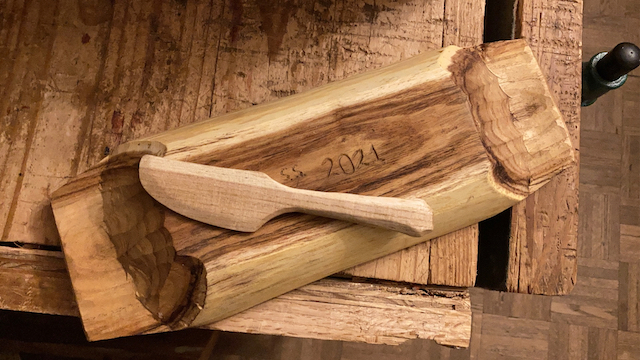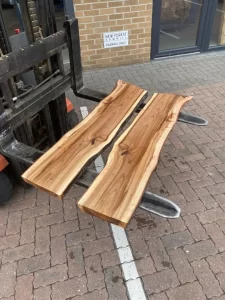What is mimosa wood good for?
Discovering mimosa wood’s adaptability opens a world of possibilities for craftsmen, builders, and artists. This unusual wood, derived from the Mimosa tree (Albizia julibrissin), has extraordinary qualities that make it very desirable in a variety of industries. In this introduction, we’ll look at what is mimosa wood good for. various applications and benefits of mimosa wood in Crosby Arborist. Mimosa wood is unrivaled in its natural beauty and fine grain, as well as its durability and workability, for a wide range of applications. Mimosa wood, whether utilized in furniture building, construction, handicrafts, or eco-friendly items, is a monument to both nature’s inventiveness and human expertise. Join us as we dig into the world of mimosa wood and discover its unlimited potential.
What is mimosa wood good for?
Understanding the Characteristics of Mimosa Wood
Google describes mimosa wood as a wood known for its exquisite texture, natural luster, and outstanding durability. Mimosa wood, obtained from the Mimosa tree (Albizia julibrissin), has a consistent texture and appealing look, making it ideal for a variety of uses. According to Google sites, mimosa wood is somewhat durable and easy to deal with, allowing craftsmen to carve, shape, and finish it with precision and ease. Furthermore, mimosa wood is very stable and resistant to dampness, rot, and insect damage, making it perfect for both indoor and outdoor use. According to Google, mimosa wood’s versatility extends to furniture building, construction, crafting, and eco-friendly items, demonstrating its adaptability to a wide range of projects and uses. With its timeless elegance and natural beauty, mimosa wood continues to enchant craftsmen and enthusiasts alike, embodying the perfect balance of aesthetics and usefulness at Crosby Arborist.
Crafting High-Quality Furniture with Mimosa Wood
Crafting high-quality furniture from mimosa wood demonstrates the material’s adaptability and beauty. Mimosa wood is well-known for its exquisite grain, natural luster, and great durability, making it ideal for furniture manufacturing. Craftsmen prize mimosa wood for its ease of workability, which enables them to precisely carve, shape, and polish elaborate designs. Mimosa wood furniture oozes sophistication and charm, adding timeless appeal to any interior area.
Furthermore, mimosa wood’s durability and resilience make it an excellent choice for long-lasting furniture. Its resilience to moisture, rot, and insect damage ensures that mimosa wood furniture retains its beauty and integrity for future generations. Whether utilized in classic or modern designs, mimosa wood furniture allows artists to create timeless pieces that reflect workmanship and elegance.
Building Sustainable Structures with Mimosa Wood
Building sustainable structures with mimosa wood highlights the synergy of nature and construction, providing a renewable and environmentally friendly alternative to typical building materials. Mimosa wood’s high strength-to-weight ratio, combined with its resistance to moisture and decay, makes it an excellent choice for a variety of structural applications. Architects and builders value mimosa wood for its adaptability in framing, decking, siding, and other structural features.
By using mimosa wood in sustainable building projects, builders lessen their environmental impact while also encouraging responsible forestry methods. Mimosa trees, recognized for their quick growth and abundance, help renew forests and ecosystems, maintaining a steady supply of this essential resource. Mimosa wood buildings are very long-lasting and durable, withstanding hard conditions. Overall, building sustainable structures with mimosa wood promotes environmental stewardship while also creating robust and aesthetically beautiful spaces that benefit communities in Crosby Arborist and beyond.
Environmental Sustainability
Mimosa wood is a shining example of environmental sustainability in arboriculture. Mimosa wood, derived from renewable and carefully managed forests, exemplifies environmentally sustainable approaches. Its growing and harvesting procedures favor little environmental effect, ensuring the survival of fragile habitats. Arborists who use mimosa wood help preserve biodiversity and reduce deforestation. Furthermore, mimosa wood’s endurance and recyclability add to its eco-friendliness, making it an excellent choice for individuals who value sustainable natural resource stewardship.
Ease of Maintenance
One of the most appealing features of mimosa wood is its ease of maintenance. Unlike some other materials, mimosa wood requires minimal upkeep to maintain its structural integrity and aesthetic allure. Regular cleaning with mild soap and water is sufficient to remove dirt and debris, while occasional sealing or staining can prolong its lifespan and enhance its visual appeal. Arborists appreciate the simplicity of maintenance associated with mimosa wood, allowing them to focus
Resistance to Pests and Decay
Mimosa wood’s natural resilience to pests and deterioration makes it an effective defender against nature’s unrelenting onslaught. Unlike some softwoods, which are susceptible to insect infestations and fungal rot, mimosa wood is solid and impenetrable to the ravages of time and climatic stress. This innate tenacity translates into endurance and durability, ensuring that arboreal constructions made of mimosa wood continue to guard the canopy. The strong defenses of mimosa wood give arborists peace of mind that their creations will remain intact for many years to come.
Related Posts:
Is mimosa wood appropriate for outdoor use?
Mimosa wood, often known as silk tree wood, is generally not advised for outdoor use, particularly in situations where it will be exposed to the weather. Mimosa wood is rather soft and lightweight, making it subject to dampness, insects, and rot when used outside.
Furthermore, mimosa wood is less robust and resistant to decay than other species of wood often used for outdoor construction, such as cedar, redwood, and teak. Its low density and porous nature make it susceptible to warping, splitting, and disintegration over time when exposed to rain, sun, and temperature variations.
While mimosa wood may be good for certain indoor applications, such as furniture or decorative objects, it is not advised for outdoor use in harsh environments. To ensure durability and structural integrity, outdoor projects should be built with a more durable and weather-resistant wood species.
FAQS
Is mimosa wood appropriate for outdoor use?
Yes, mimosa wood is ideal for outdoor use due to its longevity and resilience to environmental influences.
How does mimosa wood do against other hardwoods in terms of durability?
Mimosa wood rivals or even outperforms many hardwoods in terms of durability, making it an ideal choice for arborists.
Does mimosa wood require particular care?
Mimosa wood is relatively low-maintenance; however, regular sealing or staining can improve its lifespan and aesthetic appeal.
Can Mimosa wood be recycled or repurposed?
Yes, mimosa wood can be recycled or repurposed, which is consistent with arboriculture’s sustainable principles.
Is mimosa wood eco-friendly?
Yes, mimosa wood is harvested from sustainable sources, making it an environmentally favorable option for arborists.
What are the most typical applications for mimosa wood at arborist heights?
Mimosa wood is used in a variety of arborist applications, such as treehouses, platforms, and support structures.
Conclusion
In the field of arboriculture, where every decision influences the landscape’s destiny, material selection is extremely important. Mimosa wood, with its combination of durability, sustainability, and aesthetic appeal, shines as a light of excellence for arborists. Arborists may improve their trade while also protecting the beauty and integrity of our arboreal ecosystems by utilizing the possibilities of mimosa wood.






